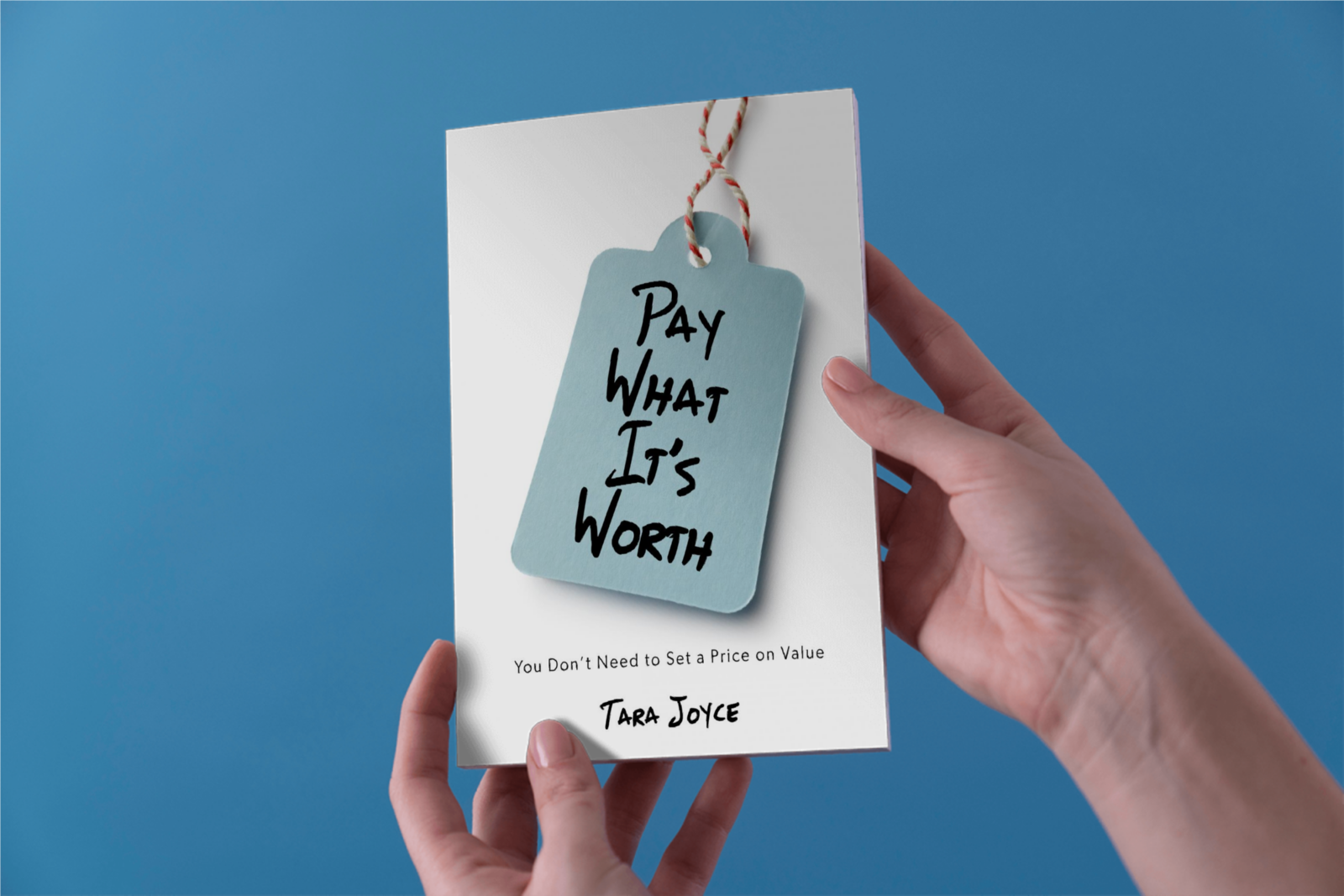
Call it what you will — value pricing, karma pricing, pay-what-it’s-worth pricing — any way you cut it, not having a price is not normal. Letting your customers set your price is very unorthodox. And yes, it makes people uncomfortable.
As far as I can tell, it’s hardly ever done. I learned about the idea from author Phillip Dignan, and in the last 6 months I’ve learned that Radiohead and a few restaurants use the model, as well as a web developer in India and a business consultant in England. And there’s also a woodworker in America that is experimenting with it… and then there’s me.
Getting comfortable with value pricing
Since February I’ve been working towards establishing a solid payment structure, i.e., when and how to charge clients, for my service-based business. It’s important that the structure works for me, but also creates a straight-forward and comfortable atmosphere for my clients to explore and practice value pricing.
My initial questions on how to value price a service
- Do I request an initial deposit, i.e., the value you place on the opportunity to work with me?
- Do I bill per project?
- Do I bill per time period?
- Do I bill per project milestone?
- Do I bill per session?
I’ve settled on #3. Pricing per time period
I realized that bottom line, the structure I chose needed to pay me regularly. Working for months without payment is not a viable, nor smart option — for that reason I was able to discount billing per project immediately. In the past half a year I’ve experimented directly with billing per project, per project milestone and per time period.
I have not experimented with initial deposits or billing per session.
Pros and cons of each pricing structure option
- Requesting an initial deposit
pros: establishes client commitment to the project and to the pricing system | cons: an undetermined deposit value is confusing, perhaps too wacky for clients to feel comfortable with? - Billing per project
pros: full, big picture value of work is realized before payment | cons: I’d work for months without any income; requires large lump sum payment from client; lack of time accountability could result in client stagnating the project completion - Billing per time period, e.g., billing bi-weekly
pros: more regular income, easy for clients to conceptualize the value between payments | cons: holidays and other work interruptions can make billing confusing - Bill per project milestone, e.g., planning the website
pros: tangible experience received before each payment is made | cons: income can be months apart; requires larger bulk payments for clients; can be hard to discern time and value-provided between far-reaching milestones; lack of time accountability could result in client stagnating the project completion - Bill per session
pros: client is valuing something tangible; regular income for me | cons: I do work for my clients between sessions
Key learnings from the last 6 months
- Value pricing establishes an immediate and deep trust between my client and I.

- My pricing structure must create a regular income stream.
- I do not accept payments for future value, i.e., I do not take money unless an already created value it attached to it.
- I must be discerning about who I work with, i.e., you need to “get” the idea of value pricing or at least be open to it.
- It is not pay-what-you-can as my client’s financial situation is not my business. It’s pay-what-it’s-worth and how you fund this is not my problem.
I’ve got so much more learning and growing to do with the concept of value pricing but I can honestly say that it has been and continues to be a very positive business experience.






